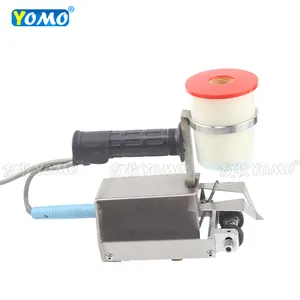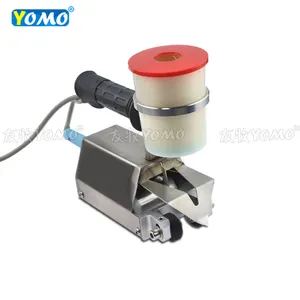
All categories
Featured selections
Trade Assurance
Buyer Central
Help Center
Get the app
Become a supplier

(33171 products available)















































There are diverse types of patchwork machines suitable for different sewing requirements. Thus, buyers need to choose an ideal machine as per the functionality and convenience required.
A sewing and quilting machine performs sewing and quilting and is good for making quilts and patchworks. These machines are normally fitted with stitching feet and quilted plates, which allow for better patchwork tasks. Some machines also come with quilting attachments, enabling users to undertake complicated quilting styles effortlessly.
These machines are basic and perform manual patchwork activities. Although limited in functions, manual machines are cheap and good for beginners. They entail basic settings for stitching and explicitly offer the user control while performing tasks.
As computerized devices become the demand of the day, there is no denying that they are here to impress. Patchwork sewing machines are computerized devices that provide auto-stitching modes, pattern storage, and digital displays. These machines suit users who need more accuracy and want to execute diverse designs. They also include a touchscreen panel used to select the settings quickly.
These machines include adjustable feet and embroidery attachments to do patchwork and embroidery. They are classified as all-in-one devices since they allow users to create different styles on a single machine. However, embroidery machines are pricier and bulky, making them harder to transport.
These machines are constructed for large patchwork jobs. They have high power and speed, enabling them to work for long periods without a break. Industrial patchwork machines are perfect for manufacturers and crafters who need to produce a large output.
Different supplies and parts are important for the proper functioning of sewing and patchwork machines. Knowing these devices helps enhance machine operations and boosts creativity potential.
Patching materials, such as quilt fabric and batting, are necessary to make any patchwork project. Fabric comes in various types, for instance, cotton and polyester, which offers diverse textures for quilting. Batting is placed inside the quilt between fabrics and comes in cotton, wool, or synthetic types, as per insulation needed.
Pocket sewing machines feature an extensive collection of sewing machine needles. They vary in size and type, fabric-specific ones, such as universal needles, ballpoint needles for knitted fabrics, or quilting needles for sewing quilting. Needle selection affects sewing quality, and users must match the fabric and thread for better results.
Sewing threads are critical to any sewing or patchwork activity as they come in various materials and categories. Polyester threads are strong and generally water-resistant, making them ideal for general use. Cotton threads have a natural feel but weaker tensile strength, hence ideal for quilting or embroidery uses.
Various presser feet, including the zipper, buttonhole, and walking foot, are available for sewing tasks. Furthermore, sewing machine feet feature different attachments, such as stitch guides and seam gauges, to help enhance accuracy. These accessories make different tasks easy and fast.
Measuring tools like quilting rulers, rotary cutters, and mats ensure accurate fabric cutting. Rulers come in diverse lengths and designs, having marked measurements with specific pattern shapes. It is advisable to place quilting mats under the rotary cutters to protect the blads and surfaces.
These machines are widely used in the commercial industry since they produce desirable results and are time efficient.
Patchwork machines are used to make quilts, both individual and bulk, in quilting businesses and workshops. They improve work speed by automating complicated stitching procedures and improving accuracy in pattern designs. Such machines increase productivity and enable quilters to produce more work within a specified time.
Patchwork designs add textiles to fashion and apparel. Designers use patchwork machines to combine various fabrics into unique designs and patterns. This leads to the production of unusual clothing that comes with a unique appeal and redesigns the use of available resources.
Patchwork machines are used to add covers to chairs, sofas, and cushions within the upholstery industry. They combine fabric remnants to offer beneficiaries unique upholstered pieces for creation and sustainability purposes. In addition, patchwork machines enable quick and effective assembly of complex embroidery patterns on wall hangings, pillow cover cases, and seat covers.
Within the home-textile industry, patchwork machines make fabric-based items like table runners, placemats, and wall hangings. Combining diverse fabric pieces leads to uncommon patterns that promote creativity and usefulness. Manufacturers can quickly produce many items with patchwork machines, thus generating more income.
More retail stores offer customers patchwork opportunities, which enable customers to create unique merchandise. Available patchwork machines assist buyers in designing and personalizing items like bags, clothing, and accessories. Such initiatives enhance customer participation and lead to more unique and unfulfilled merchandise.
When selecting a patchwork machine, there are several factors one must consider, and one of them is understanding the differences between the available devices. Here are some tips:
The user's skills level also determine the choice of machine. Professionals need elaborate machines, but starters require simple machines with basic functions. It becomes handy to use a machine with a simple layout and made to work to speed up learning for novice users.
The features also depend on the function of the chosen machine. A novice will not require many stitches, but a professional will need several. Machine features should be compared based on the desired outcome. Adding extra features adds to the cost but saves time and effort in the long run.
Consider how often the machine will move. Crafters working in several locations will need lightweight and compact machines. However, if working in one place, the weight of the machine is insignificant as long as it has all the required functions. Transportation is made easier with carrying cases, hence the need for one.
How much the machine costs should relate to how often it will be used and the user's skill set. While most of these machines can be pricey, they will last and have more functions. In some instances, budget machines can suffice at the beginning or for simple tasks.
Enduring brands have machines of good quality and offer dependable customer service. Therefore, it is wise to buy a machine from a reputable brand. A warranty covers the machine from any default that may occur within a specified period. One may be tempted to buy machines without names; they do not offer warranties or do so for short periods.
A1.The capability and strength of a patchwork machine depend on the specific presser feet and needle used. Most machines combine several types of fabric, such as cotton, polyester, and wool, effortlessly. Heavy fabrics like denim or leather require a powerful sewing machine with the right needle.
A2.Patching machines do require deed frequent maintenance to work well for as long as they should. Sewing machine maintenance includes cleaning, oiling, and changing the needle regularly. Other maintenance practices include checking for worn-out presser feet and making sure the machine is covered when not in use. Professional servicing is required for machines meant for heavy use.
A3.Some patchwork machines have standard sewing machine functions such as zig-zag and straight stitches. Other functions include the walking foot and dual feed, which allow the machines to work on more fabric layers without slipping.
A4. Yes, the patchwork machines incorporate various quilting attachments and a walking foot to help hold several fabric layers during quilting. Quilters can also make different patterns and styles of quilting using quilting rulers, feet, and batting.
A5.The best way to store a patchwork machine when not in use is to cover it with a dust cover or a clean cloth. It should also be kept in a dry and cool place away from direct sunlight. Some machines are portable, making it easy to transport and store them in a carry case.